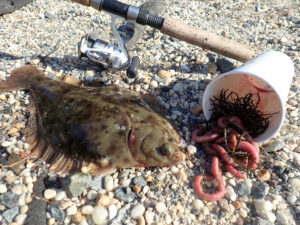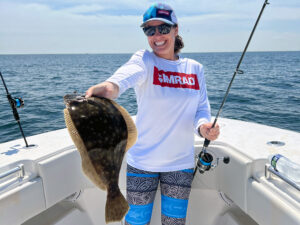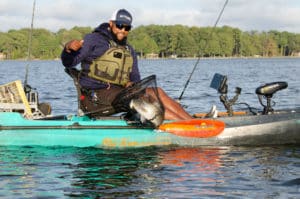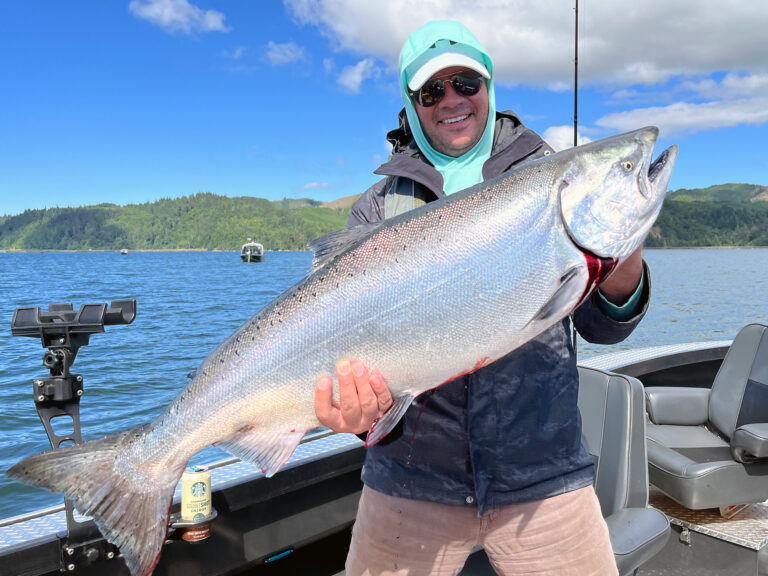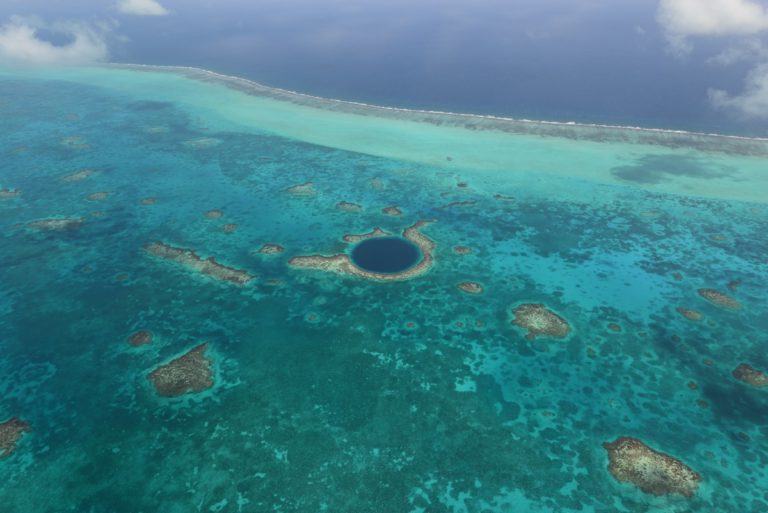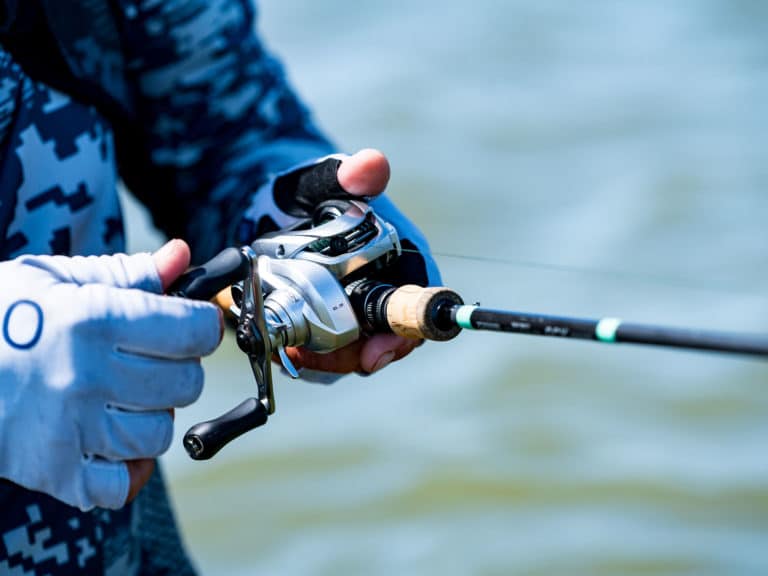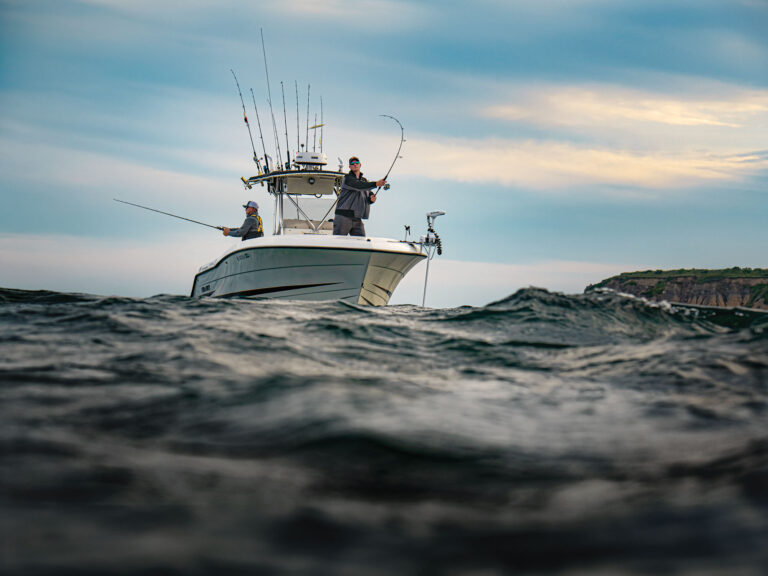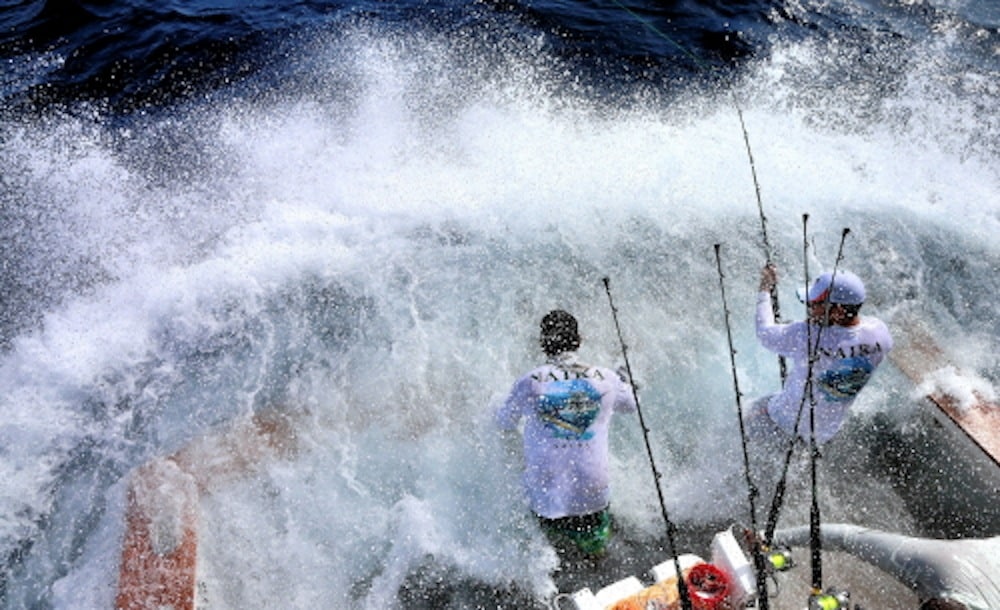
Wet and Wild
Envision this classic scene: The captain faces aft on the flybridge, each hand clenching a throttle lever; angler and crew in the cockpit battle a big fish off the stern, as white water careens over the transom amid a haze of black smoke belching from revving diesels.
Captains of large sport-fishers have been pulling this off for decades — chasing speedy pelagic game species such as marlin and sailfish by driving the boat in reverse. It works, especially when fishing with relatively light tackle and/or competing in tournaments, where gathering line fast, getting to the leader quickly and tagging the fish proves critical in amassing as many official releases as possible.
Yet, “backing down,” as the technique is known, can be dicey. Do it right, and you get to the leader swiftly and safely. Do it wrong, and you’ll swamp. In a worst-case scenario, the boat sinks. Don’t scoff. It has occurred.
“No fish is worth risking the lives of your passengers and crew,” says Capt. Allen DeSilva, skipper of Mako, a Briggs Marine 56-foot Carolina-style sport-fisher. DeSilva’s skippering has led to six blue marlin over 1,000 pounds, including the Bermuda blue marlin record of 1,352 pounds, set in 1995.
To safely back down, you need well-honed boat-handling skills, a strong understanding of wave dynamics, and an intimate knowledge of how your boat behaves in reverse, according to DeSilva, who captains Mako in Costa Rica during winter and in Bermuda during summer.
The Right Stuff
Start with the right kind of boat. As I mentioned in the June 2014 story entitled “Battle Plan,” prudent seasmanship suggests that captains avoid backing down in an open boat, such as a center console, because it’s tough to keep water from flooding forward in an open boat. On the other hand, center-consoles prove well suited to chasing fish going forward.
Backing is only for larger sport-fishers — boats in the 40-plus-foot range — but the design of the transom can also play an important role, according to Australian captain John Ashley, who fishes for black marlin out of Cairns, striped marlin off New South Wales, and blue marlin off Cape Verde, Africa.
“I fished in a G&S Boats 50-footer, and even backing up in 30-knot winds and sloppy seas, the boat was amazingly dry.” In this case, G&S designed the stern with a 45-degree angle from the running surface to the transom. The corners of the transom are also rounded. Both elements allow water to flow smoothly around the stern.
G&S also has a system that pumps fuel to bow tanks (it takes five minutes) to temporarily elevate the stern. Once the fight is done, you can pump the fuel back into the stern tanks.
Finally, avoid having a swim platform on the transom, which can dig into waves, rip loose or even pull the stern underwater when reversing hard.
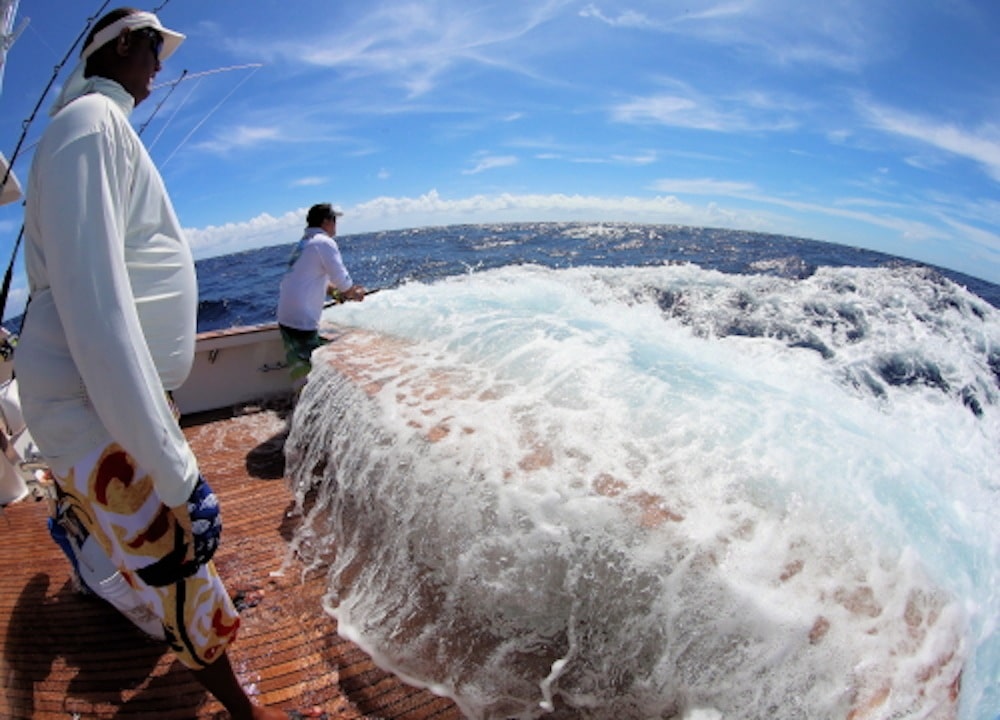
Over the Transom
Let It Drain
No matter how well designed, most boats are going to take some green water when reversing. So, having big, one-way scuppers ranks as one of the most critical elements in draining the cockpit as quickly as possible.
At the same time, it’s important to keep the transom door, salon door, transom door and deck hatches battened to prevent water from gushing into the cockpit, cabin or bilge. Also, secure any stray gear like buckets and dock lines that might trip or entangle crew amid the wash and confusion.
When water floods the cockpit, some of it will always leak belowdecks. “You just can’t keep water out of the bilge,” says DeSilva. With this in mind, he has installed two 2,500 gph bilge pumps and keeps them running continuously while battling a fish in reverse. He also has two audible high-water alarms, each set at different levels. “When the lower-level alarm sounds, it’s only mildly concerning,” he says. “But when the upper alarm goes off, well, that might be trouble.”
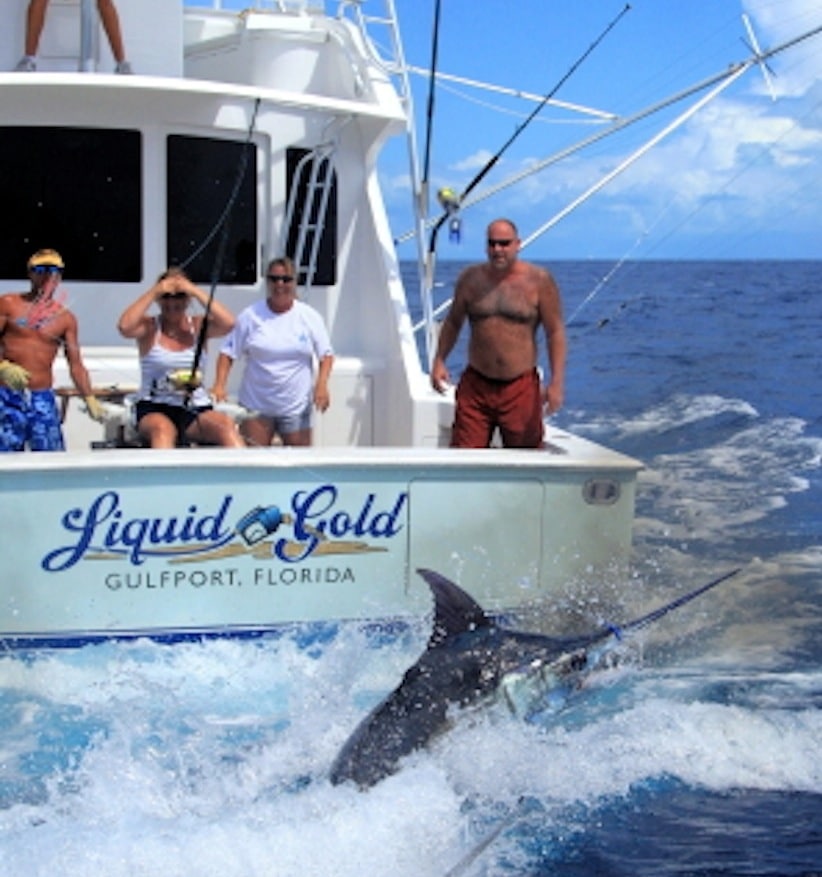
Big-Game Pursuit
Time the Waves
To stay out of trouble, avoid getting heavy-handed with the throttle, especially when backing into heavy seas. “There are a few young-gun captains down here who still want to back down fast and fill the cockpit with water,” says Ashley. “That’s very dangerous.”
Both captains agree that sea conditions determine speed and technique. “Every situation is different, but when backing into big seas, I go just fast enough to ‘maintain’ line,” says DeSilva. If the fish turns and allows the captain to back in a down- or cross-sea direction, he can pick up enough speed for the angler to gain line.
DeSilva also likes to time the waves, applying heavy throttle between rollers, and then slowing down as waves approach the transom. “This allows me to reverse a bit faster yet keep everyone safer than if I hammer the throttle,” he explains. Also, since the cooling-water pickups face forward, going too fast in reverse for too long can overheat the engines.
Yet, even when the seas are smooth, DeSilva doesn’t like to crowd the fish too much. “Unless we’re fishing a tournament, we might as well take our time and enjoy,” he explains.
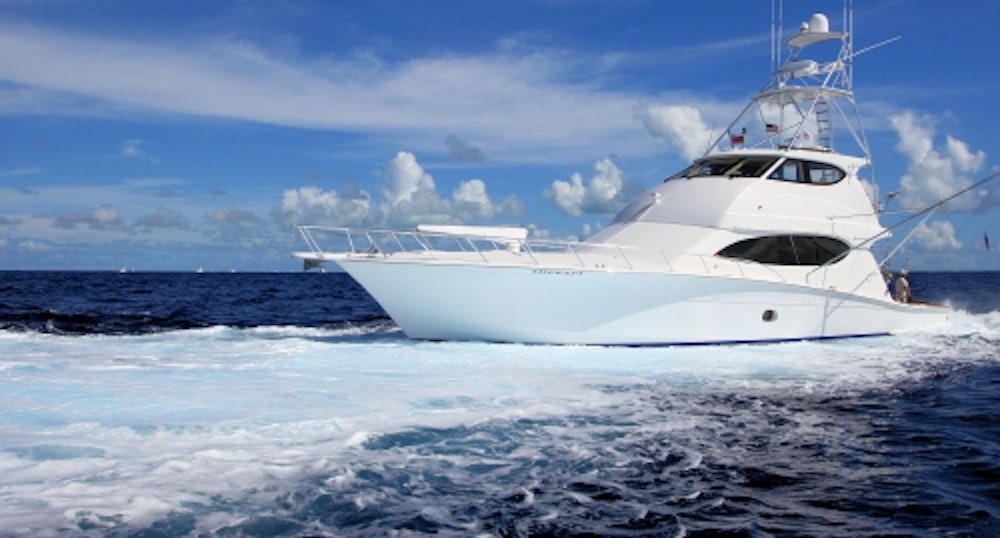
Reverse Move
Spin Move
There are rare occasions when you need to turn the boat around and chase the fish going forward, according to DeSilva. One such situation is when you hook a big fish on light tackle.
When a greyhounding marlin threatens to spool you on its first run, for example, you just can’t back up quickly or safely enough to put line on the reel, especially if reversing into a steep head-sea.
However, the decision to turn around must be made quickly, he warns. “You can’t wait until the fish has nearly emptied the reel because the mere act of turning the boat around can drain the spool of 200 yards of line,” DeSilva points out.
In chasing the fish going forward, he keeps the angler in the cockpit, whether in a fighting chair or using stand-up tackle. When motoring forward, the captain keeps the line at either the 10 o’clock or 2 o’clock position.
Once the fish settles down and there’s sufficient line back on the reel, you can spin the boat around and resume the chase in reverse. “With a well-designed Carolina-style boat like Mako, backing down is more natural and effective than running forward,” says DeSilva.
Ultimately, successfully backing down on big offshore fish requires a combination of the right boat, good safety equipment, strong boat-handling skills and respect for the power of the sea. That’s the right kind of reverse thinking.

